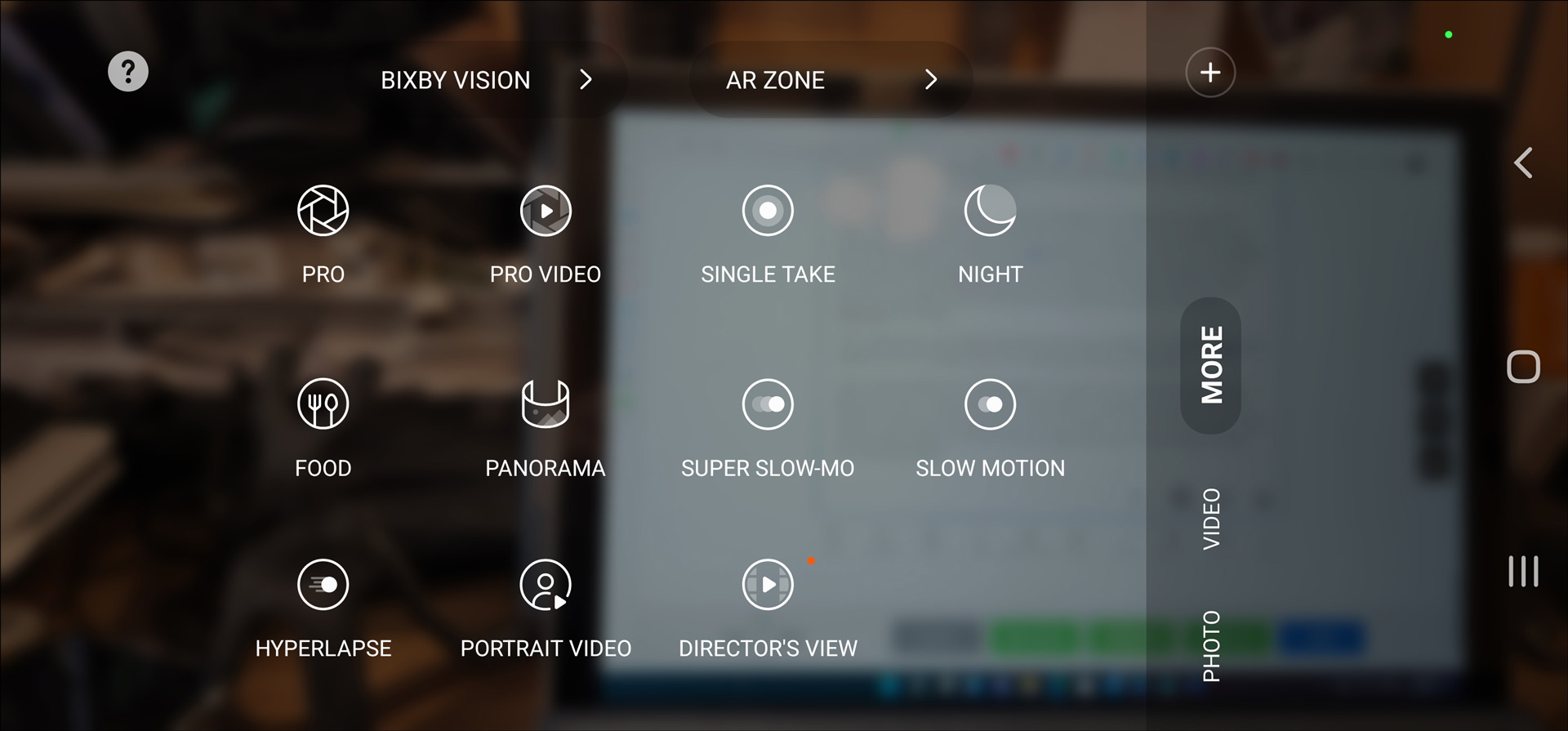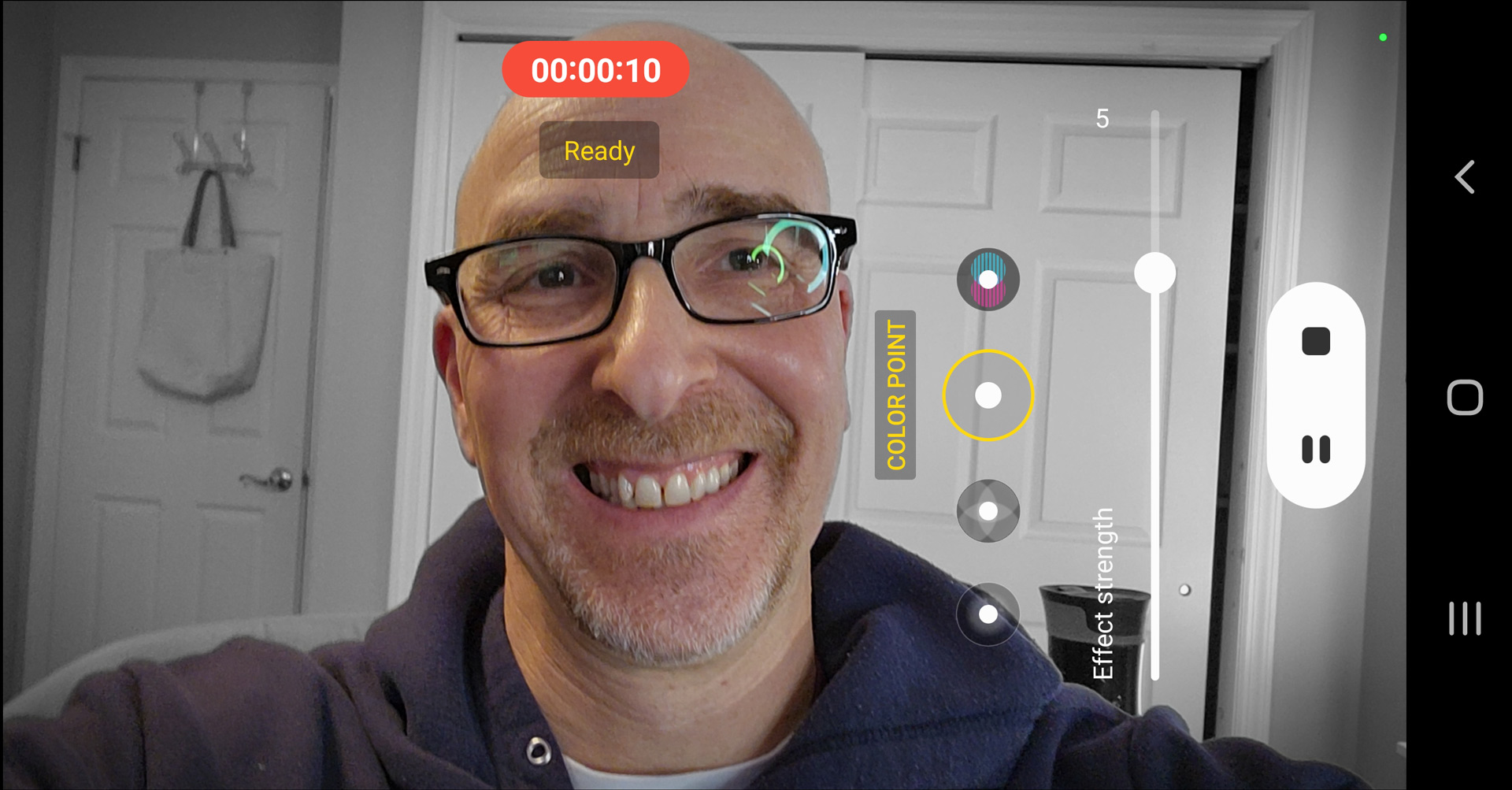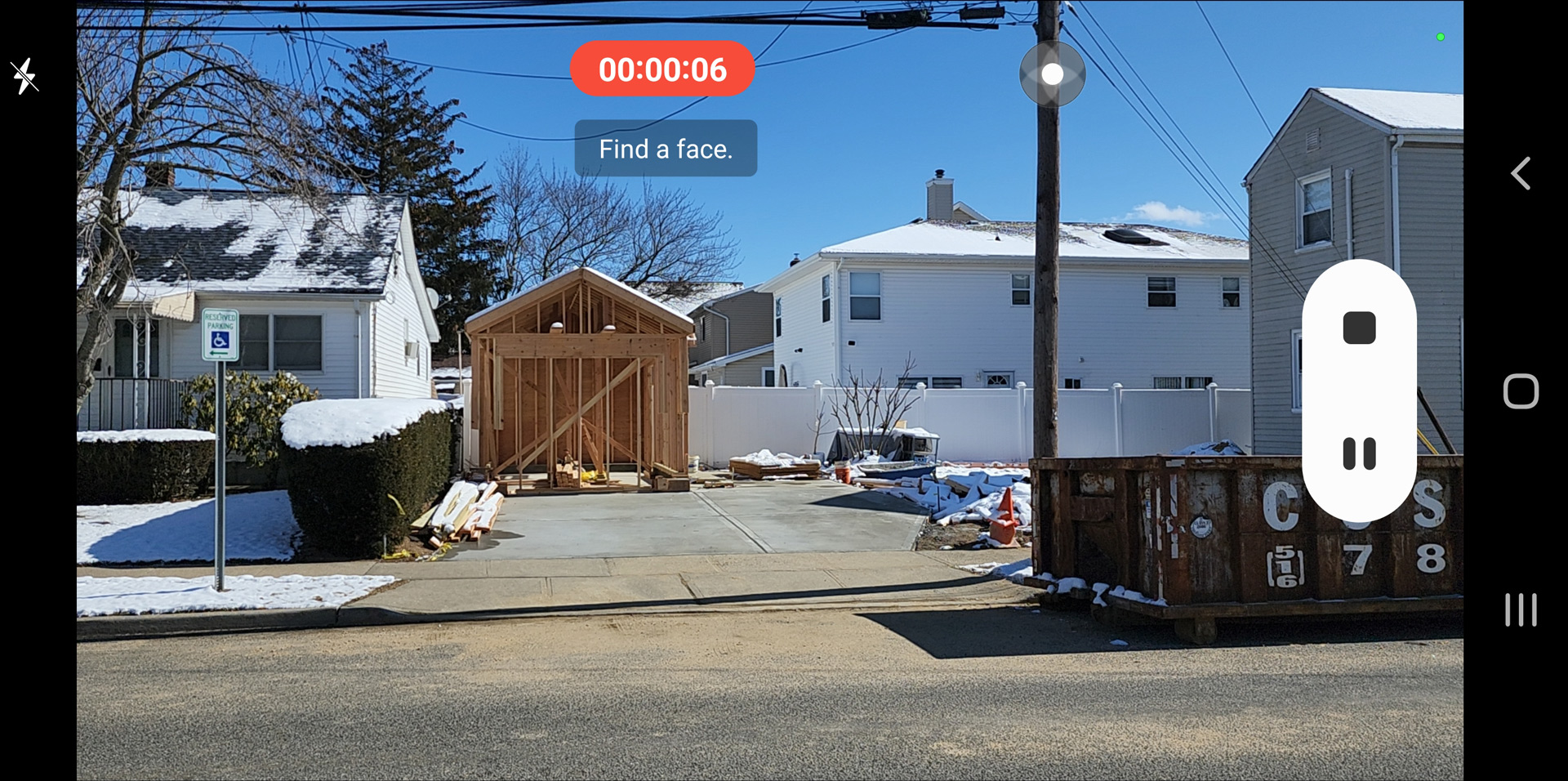Oh, Samsung Galaxy S22 Ultra, I wanted so much more from your Portrait Video. The Galaxy S22 Ultra is, in many ways, a powerful Android 1...
Oh, Samsung Galaxy S22 Ultra, I wanted so much more from your Portrait Video.
The Galaxy S22 Ultra is, in many ways, a powerful Android 12 handset for professionals. It's got that massive screen; a built-in stylus for note-taking, markup, and more; and an incredible camera array with some truly eye-popping specs. What it doesn't have is cinema-quality video, however.
Sure, I can shoot up to 8K video at 24 fps for TVs that almost nobody owns, and gorgeous 4K 60 fps on either the front or back cameras. But what I wanted and hoped for was the kind of easy-to-use film-making chops I now find in Apple's iPhone 13 line.
If you haven't tried or seen Apple's Cinematic mode in action, it's a film-worthy experience. Available on every iPhone 13 model, Cinematic mode is more than just portrait-mode video; It's the ability to focus on any object or person in a scene, while throwing the rest - foreground or background - into soft focus. It creates "Cinematic video" because it gives your video a cinematic look and feel. In the movies, they achieve this effect through the use of "focus pullers," people who change the short-depth-of-field focus from one subject to another by manually adjusting the lens focus. Without this effect, a movie scene would look flat and amateurish.
As we were first preparing our first takes on the Samsung Galaxy S22 line, I asked the company if these phones had similar capabilities. I was told that they all had "Portrait Video." I thought, "Brilliant, can't wait to see how this compares to Apple's Cinematic video."
TLDR: It does not.

First, Samsung hides its Portrait Video under the Camera App's "More" button. That should've been my first clue. You don't hide your light under a bushel and you don't take a premium video feature and squeeze it under "More."
After navigating to "More" on my Samsung Galaxy S22 Ultra, I opened Portrait Video and took a look at the controls. Ostensibly, they're richer than what Apple offers: Instead of just one camera, I can access the main 108MP Wide and 3X optical zoom, which I believe comes through one of the 10MP Zoom cameras. There's also a slider for live control of focus depth (Samsung calls the control "Effect strength," which is another bad sign). Apple holds the aperture control settings until before or after you've shot the Cinematic video, and they are defined as f-stops (in photography, the wider your aperture - a lower number - the shorter the focus and depth of field).
Samsung does give you a few rather cool presets, including one that radically reduces the sharpness of the background (Big Circle), another that leaves you in full color while the background is monochrome (Color Point), and a third called Glitch that makes you look like you're filming on old VHS tape. Cute, right? Useful? Not so much.

These settings work exactly the same with the Samsung Galaxy S22 Ultra's front or rear cameras. Neither set can do any kind of Portrait Video without a face in the frame. Now, you can use faces that are living or, as I did at one point, otherwise. Samsung's Portrait Video can take my 7-inch-tall Spock figure and apply a lovely Portrait video effect, for instance.
The Samsung Galaxy S22 Ultra camera will lock onto that face and hold it in focus, which is great - if this was 2020.
Apple's Cinematic video lets me put faces and objects in focus. As I shoot, I can tap on the screen to select which person or object is in focus in the video. No amount of tapping on the expansive screen will change where it focuses. To be clear, Samsung's Portrait Video will find people in the frame to focus on, but there's no way to control it.

Samsung does offer a way to inch closer to Apple's Cinematic Video ideal: Pro Video. Like Portrait Video, it lives under More, but it's also a far more powerful tool - and probably not for amateurs. Pro Video gives you complete control over everything from zoom and shutter speed and even ISO (virtual film exposure strength) to focus. It's in this last control that you approach the power of Cinematic mode. As I was shooting, I was able to use a manual focus to smoothly push and pull focus from the foreground to the back.
This is admirable, but it totally lacks the ease of use Apple brings - and I suspect the level of detail (truly "Pro") will scare off most consumers.
Look, Portrait Video isn't a deal-breaker. As I spend more time with the Samsung Galaxy S22 Ultra, I find much to love, especially in the camera array, but I won't be using it to shoot my next indie film. For that, if I want to use a smartphone (as many 21st-century auteurs do), it still has to be the power and ease of use of Apple iPhone 13's Cinematic Mode.
- 12 hours with the Samsung Galaxy S22 Ultra
- We need to talk about the Samsung Galaxy S22 Ultra's zoom photography
- Read our hands on Samsung Galaxy S22 review
- Read our hands on Samsung Galaxy S22 Plus review
- Read our hands on Samsung Galaxy Tab S8 and S8 Plus review
- Read our hands on Samsung Galaxy Tab S8 Ultra review
from TechRadar - All the latest technology news https://ift.tt/Ll4VixX
via IFTTT








COMMENTS